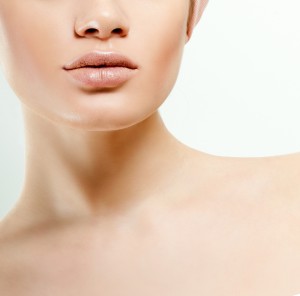Plastic surgery is a field that involves the creative manipulation and movement of tissue to achieve improvements in form or function. In fact, the term “plastic” is derived from a Greek word that means “malleable.” Fat grafting is a cutting edge technique that embodies this concept: it involves moving fatty tissue from one body area to another to achieve aesthetic improvements in the face.
What is fat grafting?
Fat grafting or fat injection is a technique that was initially described over 100 years ago to fill depressed scars in patients. Since then, the biologic understanding of fat grafting has grown vastly. Based on this understanding, techniques for fat harvesting and transplantation have been refined to ensure successful grafting. The technique involves harvesting of fat from sites that enhance body contours, such as the abdomen, flanks, or hips. Fat harvesting is accomplished by techniques, which are similar to the liposuction techniques used to recontour the abdomen or hips. A solution comprised of a local anesthetic and a medication to minimize bleeding is infused into the areas of planned fat harvesting. Using very small cannulas (long metal tubes) fat is gently harvested from the areas deemed appropriate by your plastic surgeon. The collected fluid is called a lipoaspirate. Immediately after its harvesting, the lipoaspirate is carefully prepared to extract the fat tissue that is most viable for grafting. Using very small needles, the prepared fat is then injected into the sites of the face (or other parts of the body, depending of the application) requiring rejuvenation.
Why does fat grafting work and what does it do?
Over the last 5 to 10 years, our understanding of the biology behind fat grafting has grown exponentially. Initially, it was believed that successful fat grafting was dependent on the number of fat cells that survived the transfer process. Recent studies have shown that fat tissue contains special cells called stem cells. These cells serve as precursor cells that can then develop into different cell types, depending on the cellular environments they are exposed to. In the presence of fat, these cells develop into new fat cells.
Once the fat stem cells and their associated fat droplets are placed in the vascular tissues of the face, they become active and begin to divide. This activity results in the generation of new fat cells which can replace the cells that have been lost due to normal facial aging. These new fat cells will “plump” the areas they have been placed in. In addition to adding volume, data suggests that this stem cell activity may repair some of the age-related changes to the overlying skin.
Indeed, fat grafting is not only a good wrinkle filler but serves as a regenerative treatment for facial aging.
Our plastic surgeon uses fat harvesting techniques that maximize the number of viable fat and fat stem cells, thereby increasing the likelihood of successful fat transplantation.
Areas Treated with Fat Grafting
 Fat can be grafted to virtually any areas of the face (or body) that show an age-related volume loss or wrinkling. Some of the more common uses are:
Fat can be grafted to virtually any areas of the face (or body) that show an age-related volume loss or wrinkling. Some of the more common uses are:
- Loss of cheek fullness
- Hollowing in the temples
- Filling forehead lines
- Filling in tear troughs
- Hollowing around the eyes
- Filling in the cheek folds adjacent to the mouth
- Addressing “marionette” lines
- Plumping thinning lips
- Adding soft tissue volume along the jawline
- Filling in scars or contour depressions from previous facial surgery
A less common use of fat grafting is in the hands. Just as facial fat volume is lost with aging, so too is it lost in the hands. These changes are typically seen on the knuckle side or back of the hand, appearing as a very bony hand with thin skin. Fat grafting to the areas along the back of the hand that have lost volume can restore the fullness seen in the more youthful hand.
What can I expect at my consultation for facial fat grafting?
Facial fat grafting is frequently included as part of a comprehensive treatment plan for facial rejuvenation. Occasionally, you may be a good candidate for primary fat grafting facial rejuvenation. In order to determine the best treatment plan specific to your needs, you will undergo a detailed evaluation by Dr. Neil Zemmel. You will undergo a detailed examination of your facial anatomy and the age-related changes that you are most concerned with. Based on this assessment, your surgeon will develop a comprehensive surgical plan that will address each of your concerns. To assist in explaining the surgical plan, you will undergo a state-of-the-art 3D photographic analysis that can give also give you an idea of what you can expect following surgery.
In addition to evaluating your specific concerns, your surgeon will also perform an assessment of your overall health to identify underlying medical conditions that may affect your results, such as uncontrolled hypertension or diabetes, smoking, and a history of scarring following previous surgery. Based on your history, you may be asked to see your primary care physician prior for a preoperative assessment.
Within a week or two prior to surgery, you will meet with your surgeon again to review the operative plan and goals. It is a great time to have any questions you have answered. Feel free to write down any and all questions after your initial visit to ensure they are all answered prior to surgery. Prior to the day of surgery, the Richmond Aesthetic Surgery team will provide you with instructions for the day of surgery, postoperative instructions, and any prescriptions you may need following surgery when you get home.
The Day of Surgery
 On the day of surgery, you will meet your surgeon to ask any final questions that you may have. You will meet a Board Certified Anesthesiologist and Nurse Anesthetist who will provide your anesthesia. Fat grafting in limited areas can be performed under sedation. However, general anesthesia is necessary if fat grafting is combined with other facial procedures. Please inform the Anesthesia team of any particular difficulties you may have had with prior surgeries, especially anesthesia-related nausea. You will meet our experienced intraoperative nursing staff who will care for you during surgery. Limited fat grafting of the face takes about 1 hour. Patients with fat grafting can usually go home the same day; however, if combined with other procedures, an overnight stay may be necessary.
On the day of surgery, you will meet your surgeon to ask any final questions that you may have. You will meet a Board Certified Anesthesiologist and Nurse Anesthetist who will provide your anesthesia. Fat grafting in limited areas can be performed under sedation. However, general anesthesia is necessary if fat grafting is combined with other facial procedures. Please inform the Anesthesia team of any particular difficulties you may have had with prior surgeries, especially anesthesia-related nausea. You will meet our experienced intraoperative nursing staff who will care for you during surgery. Limited fat grafting of the face takes about 1 hour. Patients with fat grafting can usually go home the same day; however, if combined with other procedures, an overnight stay may be necessary.
What can I expect following facial fat grafting?
Immediately following surgery, you will return to your room, following a short stay in the recovery area. You may have small incisions closed with small sutures in the areas that have undergone grafting. You will be given instructions to apply antibiotic ointment over the incisions and to keep you head elevated for the first 3-5 days. You may experience some mild pain at both the site of grafting as well as the donor site. In most cases, pain is mild and is well controlled with oral pain medications that you will be given prior to surgery. Shortly after surgery, you may notice moderate swelling at the treated areas. As the initial swelling resolves, you will begin to appreciate your new look. Swelling usually resolves in a few weeks, although some persistent swelling may last for up to 3 months.
Following surgery, you may experience some numbness at the injection sites or at the donor sites. This numbness usually resolves in about 6 weeks, although it may persist for up to 6 months.
The long-term results of facial fat grafting are dependent on how well the fat cells survive the transfer process and then grow in their new location. As a result, your results will continue to change and improve over time; however, your final results may not be fully evident until 6 months. In a given treatment, it is usually anticipated that approximately 30% of grafted fat will be absorbed by the body. Because results can be unpredictable, multiple treatments are sometimes necessary to achieve the desired long-term results.
What are the complications of facial fat grafting?
In the hands of a qualified Plastic Surgeon, such as Dr. Neil J. Zemmel, complications from facial fat grafting are rare and are relatively minor. The most common complications include:
- Hematoma (blood collection under the skin)
- Asymmetries
- Lumpiness under the skin
- Temporary numbness of the skin
- Infection
How can I learn more?
To learn more about facial fat grafting or to schedule a consultation, please contact our office for your consultation here at Richmond Aesthetic Surgery.